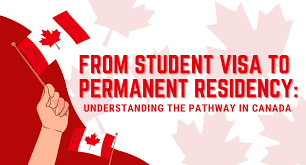Pathways to Permanent Residence in Canada for International Students
published On - 26 June 2024
published By - R&R Law LLP
Overview
While obtaining PR is not guaranteed for international students, preparation and strategic planning can significantly improve their prospects. Understanding the eligibility criteria and taking proactive steps can make candidates more competitive in Canada's PR process. Canada offers over 100 immigration pathways for economic class candidates, many of which favor those with Canadian education due to their positive labor market outcomes and recognized local education and work experience.
Steps to Pursue Canadian PR
1. Post-Graduation Work Permit (PGWP)
After completing their studies, most international students apply for a PGWP, which provides an open work permit allowing them to work for any employer in any occupation. The length of the PGWP is aligned with the duration of the student's studies, up to a maximum of three years. This permit is crucial as it enables students to gain Canadian work experience, a valuable asset in the immigration process.
2. Research Immigration Pathways
Early research on Canadian immigration pathways is essential to identify the most suitable options and understand their specific criteria. Generally, pathways assess candidates based on English and/or French proficiency, education, and work experience. Additional points can be gained from job offers and ties to the province or territory of residence. Tools like the CanadaVisa assessment can help determine eligibility for Canadian PR.
3. Common Immigration Pathways
Express Entry
Express Entry manages applications for three federal skilled worker programs:
- Federal Skilled Worker Program (FSWP)
- Canadian Experience Class (CEC)
- Federal Skilled Trades Program (FSTP)
International students with at least one year of Canadian work experience might find the CEC particularly suitable. Those with professional work experience from overseas may consider the FSWP. Candidates must meet the eligibility criteria of at least one program and then upload a profile to the Immigration, Refugees and Citizenship Canada (IRCC) website. Candidates are scored based on factors like age, education, language skills, and work experience, with additional points for Canadian education and work experience. High-scoring candidates receive invitations to apply for PR every two weeks.
Provincial Nominee Program (PNP)
The PNP allows provinces and territories to nominate candidates for PR. Many PNP streams favor those who have studied and worked in Canada, with some streams specifically targeting international students. The CanadaVisa PNP Finder can provide detailed information on various provincial programs.
Quebec
Quebec operates its own immigration system, focusing on welcoming francophone skilled workers. Programs like the Quebec Experience Program reward candidates with local education and work experience.
4. Other Economic Class Pathways
Canada offers over 100 economic class pathways, including:
- Atlantic Immigration Program: For those who studied in Nova Scotia, New Brunswick, Prince Edward Island, or Newfoundland and Labrador.
- Hong Kong Pathways: For nationals from Hong Kong who studied in Canada.
- Rural and Northern Immigration Pilot: For international students in participating rural and northern communities.
5. Verify NOC Skill Level
Each skilled worker program has specific requirements regarding the skill type of work experience, classified under the National Occupational Classification (NOC). Most skilled worker streams require "high-skilled" work experience, though some federal and provincial programs accept "intermediate" or "lower" skilled experience.
6. Family Class Sponsorship
Canadian immigration also allows citizens and PR holders to sponsor close family members. For example, a spouse or common-law partner who is a Canadian citizen or PR can sponsor an international student, provided they meet the eligibility criteria.
